Steps for how to auto-transcribe a video with Notta
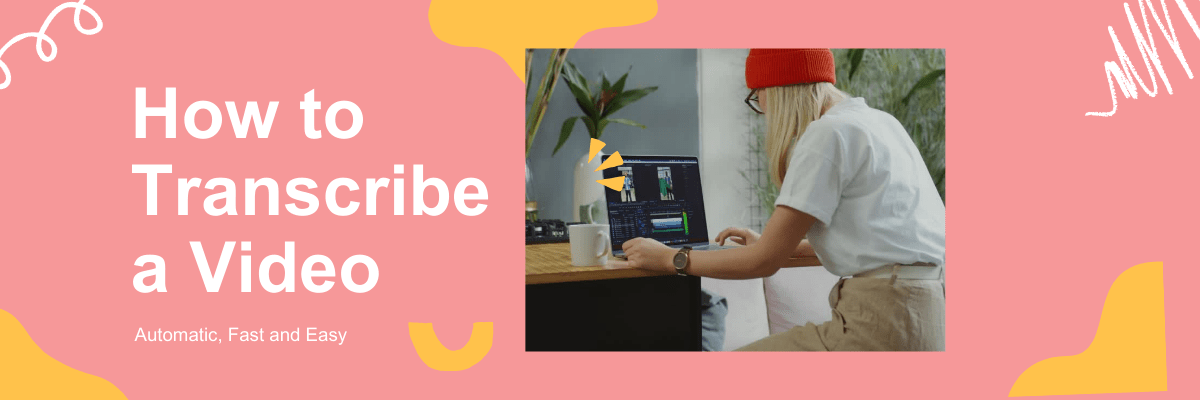
How to Transcribe a Video (Automatic, Fast and Easy)
98% accurate, real-time transcription in just a few clicks. 58 languages and multiple platforms supported.
Are you trying to create a transcript from a video without spending a lot of time doing it yourself? We understand that adding text to videos can make them more popular, but nobody wants to spend hours typing it all out. Fortunately, there are better and faster ways to get this done. You can hire experts to do it, or you can use automatic tools for quick results. Wondering which is the better option?
This article will guide you through the process of turning videos into text. We'll explain why this is important and how it can help your content get noticed on the internet. And the best part is, we'll show you how to transcribe a video into text in just a few minutes.
5 Different ways for video transcription
Below, we are listing and comparing the 5 different ways for video transcription:
Notta: Notta is an online computer program for turning speech in videos into text. It's easy to use, works with many languages, and has tools to make text better. However, the free version has some limits, and it might make mistakes if the sound or accents in the video are tricky. It's not as fancy as some other programs.
Google Docs: Google Docs is a free way to change speech in videos into text. You can work on it with others, and it lives on the internet. It plays nicely with other Google tools. But, sometimes, it doesn't get the text right, especially with hard-to-hear stuff. You can't use it for live videos.
Microsoft 365 Online: This is like Google Docs but for Microsoft stuff. It's good at getting text from clear videos and has teamwork features. However, it might make mistakes with hard videos or accents, and you need to pay for it.
Simon Says: Simon Says is really good at turning speech into text. It can handle different types of audio, connects to video editing tools, and does some work for you. But, It's a bit expensive, and the free version has limits. You need to pay extra for live video text.
iPhone's Notes App: The Notes app on an iPhone can change your voice into text quickly. It's built into the iPhone and doesn't cost anything. However, It's not as good as the special transcription programs, and it might not do well with long or tricky videos. You can only use it on an iPhone.
The choice depends on what you need. Programs like Notta are very good but may cost a small amount of money. Google Docs and Microsoft 365 Online are cheaper but might not be perfect. The iPhone's Notes app is handy for simple tasks but not for pro jobs.
How to transcribe video to text with 5 tools
Automatically convert video to text with Notta
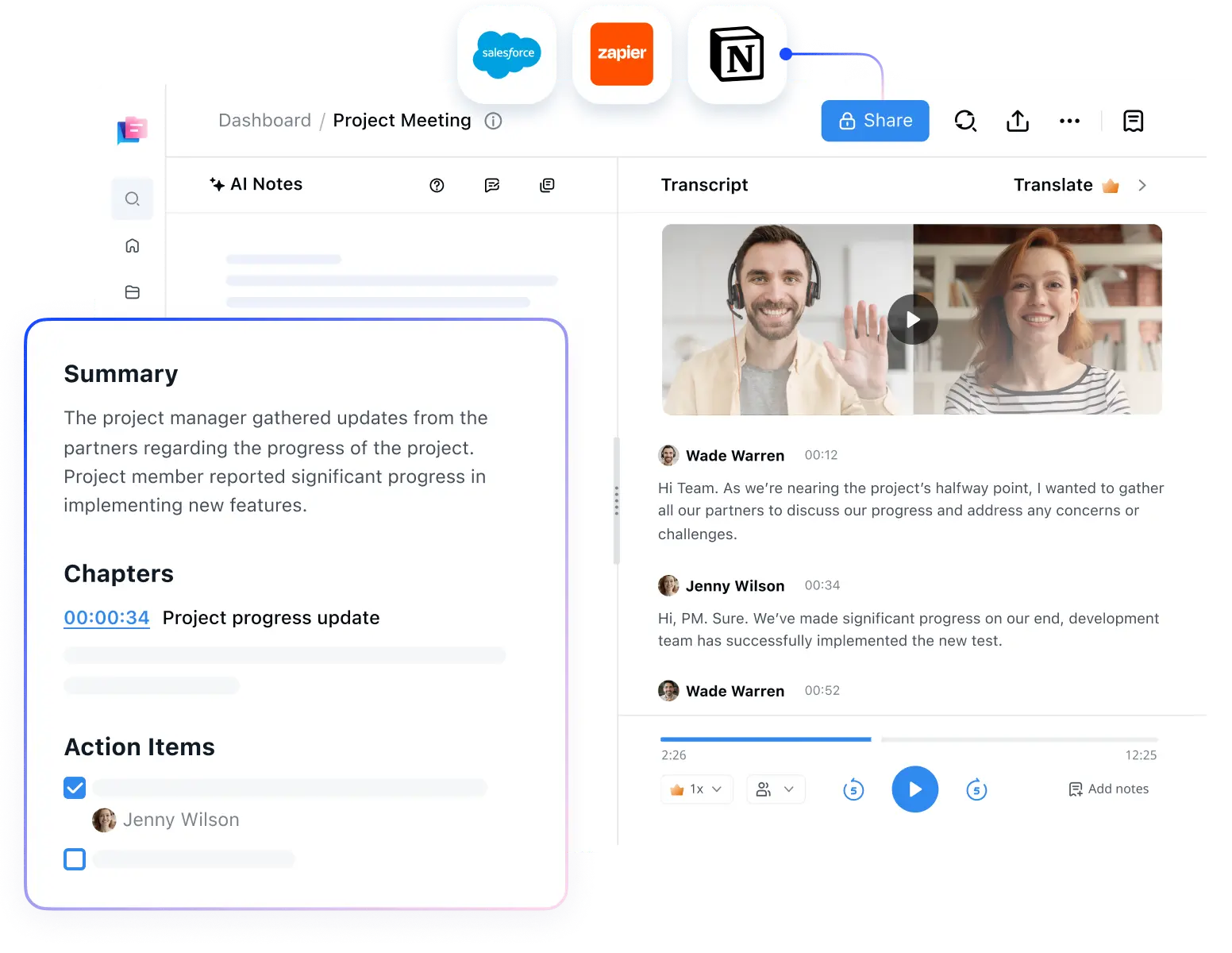
Notta is a handy transcription software that can turn spoken words from phone calls, podcasts, videos, radio shows, and live streams into written text in real-time. You can easily share these transcripts with others. Notta is great for various tasks like taking notes during meetings, turning spoken interviews into text, or saving your creative ideas in audio form.
Notta can transcribe and translate in many languages. You can use Notta to transcribe audio and video files up to five hours long by importing them. It works with different apps and web versions, and there's even a Chrome extension available. You can use Notta on different devices like tablets, PCs, and smartphones. It's also very secure and keeps your data safe.
Features:
It can work with lots of different devices and has a Chrome extension.
Transcribe audio and video immediately when you upload them or by using a link.
58 languages are supported for transcription.
Perform transcription generation through AI.
Pros:
Notta’s editing and transcribing ability is correct 98.86% of the time.
Has an interface that’s easy to use and simple to understand.
Cons:
Doesn’t have any playback control.
Step 1: Choose "Import Files." You can either drag your files or click "select documents." You can upload many audio files together. To make sure it's accurate, pick the language for transcribing. You can also change audio to text by pasting a YouTube video's URL and clicking "Upload."
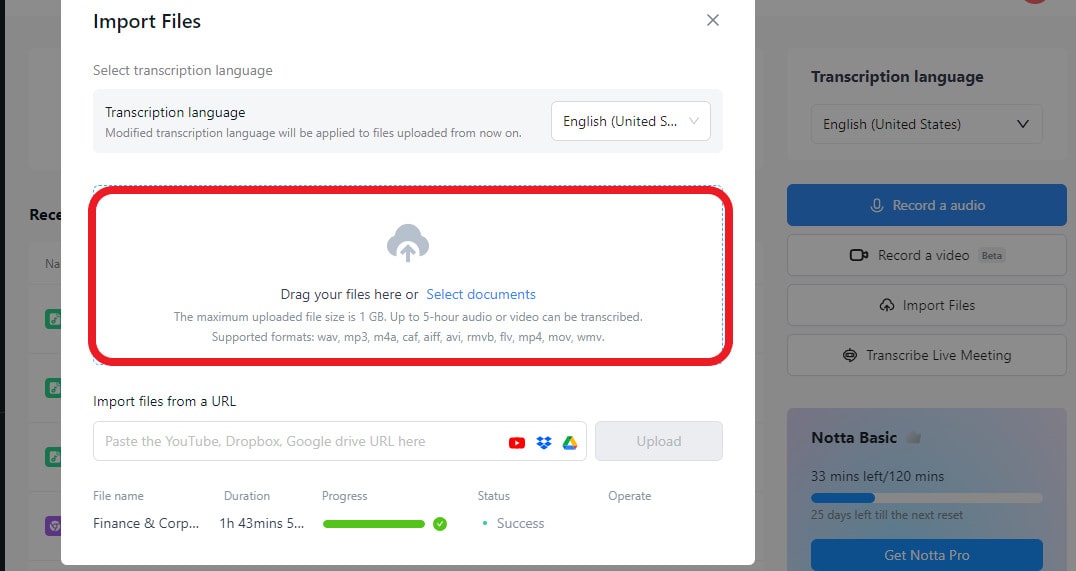
Step 2: Waiting for the video files to finish uploading. It could take a few minutes, depending on how big the files are. The biggest file can be 1GB. Once the uploading is done, the video will start turning into text automatically. After that, you can click the text twice to play back the audio with timestamps. You can also add notes and pictures to make your transcriptions better.
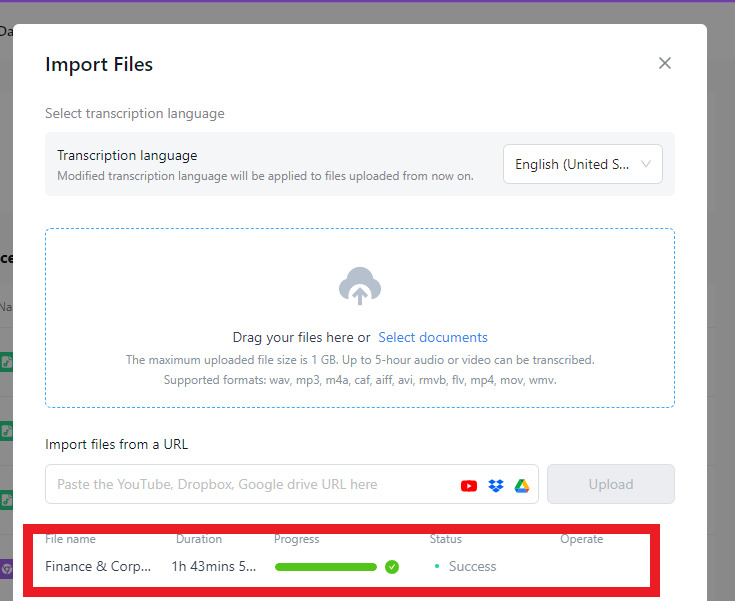
Step 3: Click "Export," then pick a text format like TXT, DOCX, SRT, or PDF. SRT is a common format for video subtitles. Transcribing video to text helps you easily add subtitles to videos. You can also share recordings and transcripts with colleagues or clients through a link, and they don't need a Notta account for this. To make a special link to share with others, click the "Share" button.
Transcribe video to text free by Google Docs
Another good way to turn video into written words for free is by using Google Docs in the Google Chrome web browser. In Google Docs, there's a cool feature called "voice typing." When you click on it, you can talk, and it will turn your words into written text right in your document. It's an easy, useful, and quick way to transcribe audio.
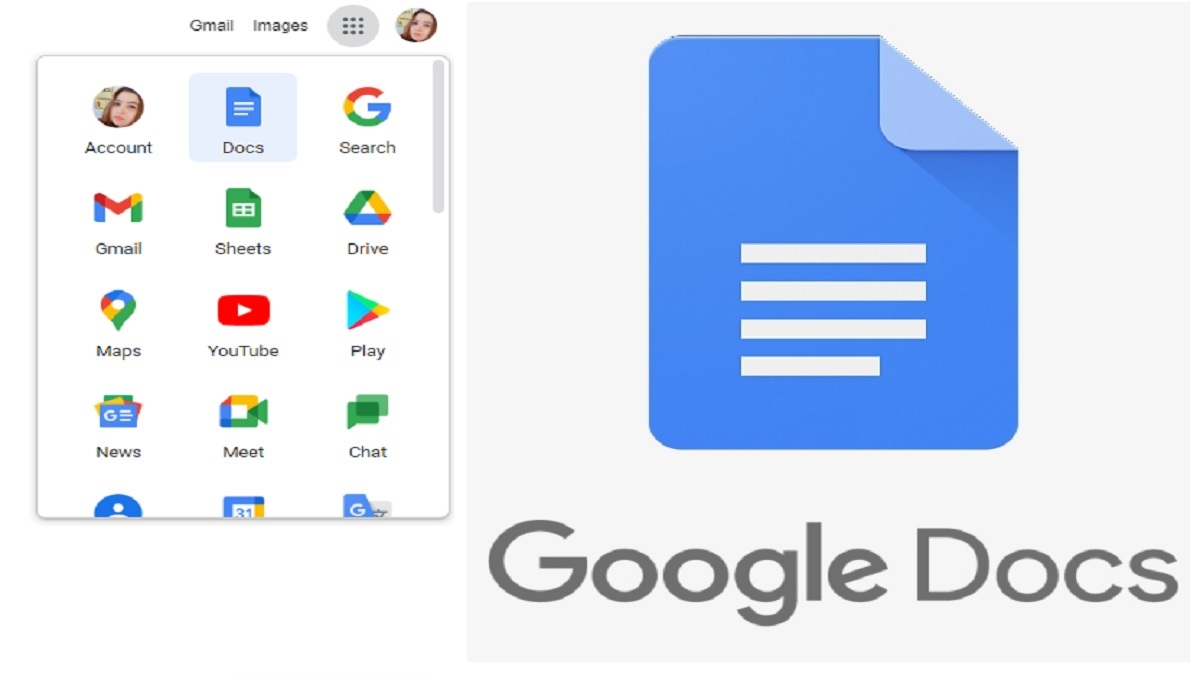
Features:
Users can transcribe audio content in real-time and reduce the time needed to transcribe video to text.
Provides you with a user-friendly and straightforward interface for making it accessible to all users.
Google Docs lets you turn speech into text for free with any Google Docs account, which is a low-cost way to transcribe audio.
Pros:
Allows you to change the words after they're written down.
You can do this for as many videos as you want.
Cons:
Noise in the background can cause a big problem.
Usually needs a lot of changes.
Steps to transcribe video to text free by Google Docs
Step 1: Go to Google Docs and choose 'Blank document' on the main page. This will start a new empty document where you can start typing.

Step 2: Go to "Tools" in the menu and choose "Voice typing" to turn speech into text. You'll see a microphone icon on your screen. Or, you can quickly get there by pressing "command + shift + s" on your keyboard.
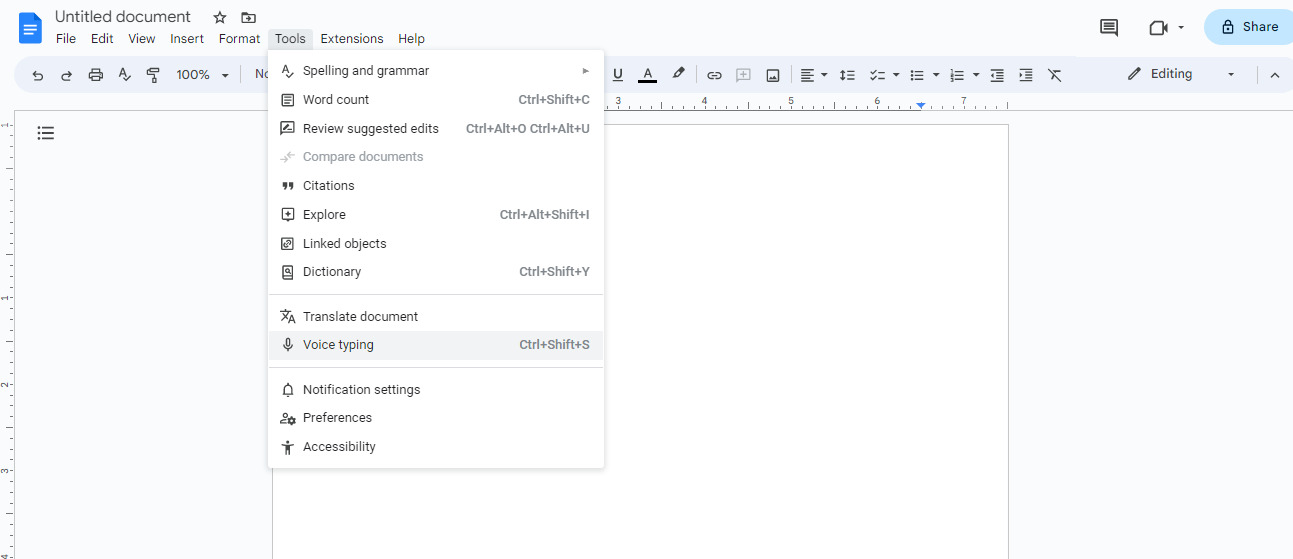
Step 3: Connect your microphone to your device and check that it's functioning properly. Before you begin typing what you hear, make sure your microphone is set up and working.
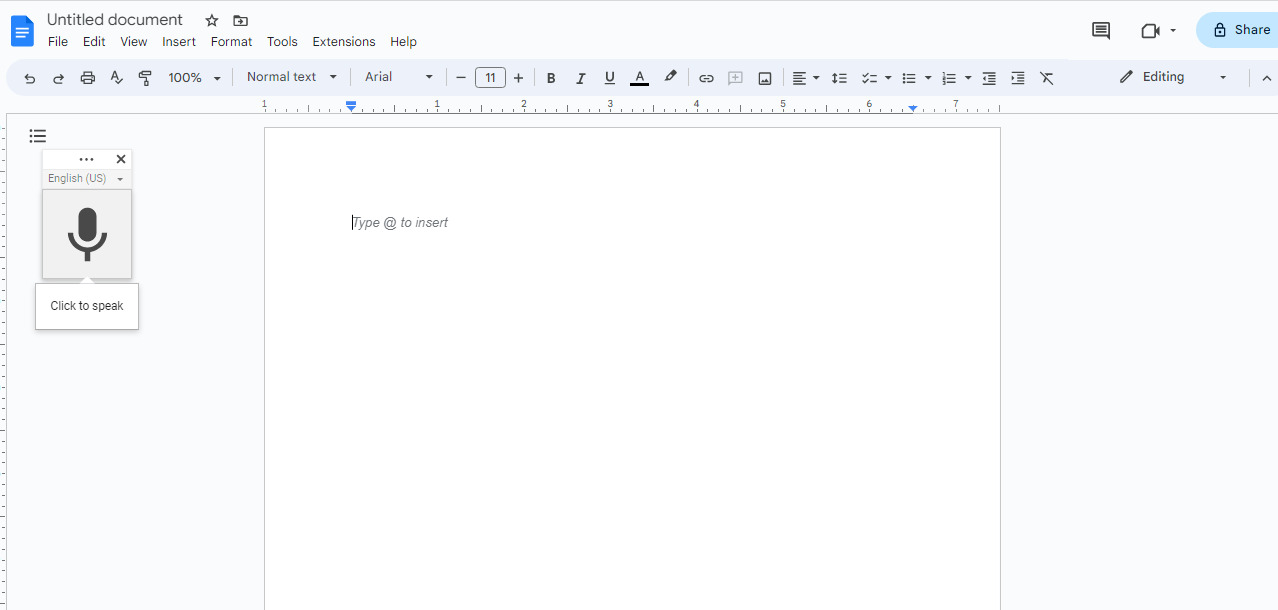
Step 4: Choose the right language for your transcription work. Google Docs voice typing works with more than 100 languages.
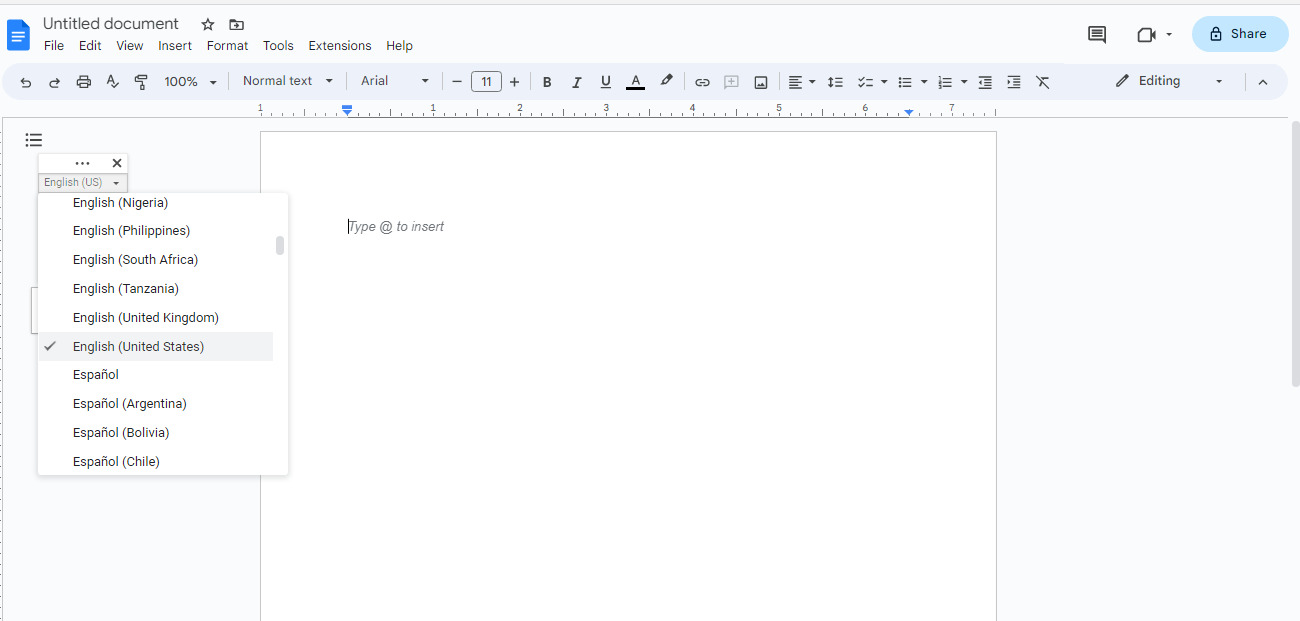
Step 5: Picked your language, you can start transcribing. Just click on the microphone symbol to turn on voice typing, then speak into your microphone. Your words will show up on the screen as you talk, right away.
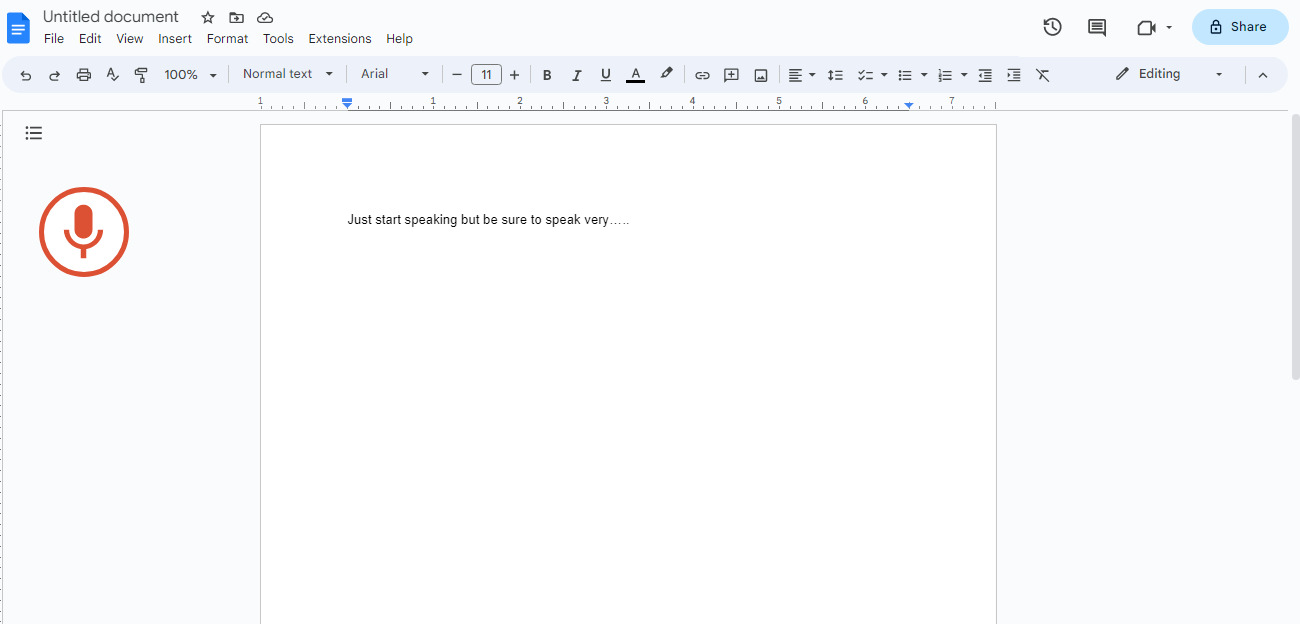
Step 6: Use special voice commands that make it easier to format your transcription. For instance, you can say 'period' to add a full stop or 'comma' to put in a comma. You can also use voice commands to remove or change words. But remember, these voice commands work only if you're using English for your account and document language.
Step 7: Check and fix any mistakes to make sure it's correct and easy to understand. You can use Google Docs tools to make it look nice and correct any errors.
Transcribe video to text by Microsoft 365
A cloud-based subscription service, Microsoft 365 provides a lot of creative tools and applications for individuals, businesses, and educational institutions. It has stuff like Word, Excel, PowerPoint, and others. You can use them in a web browser and work with others online from anywhere with the internet.
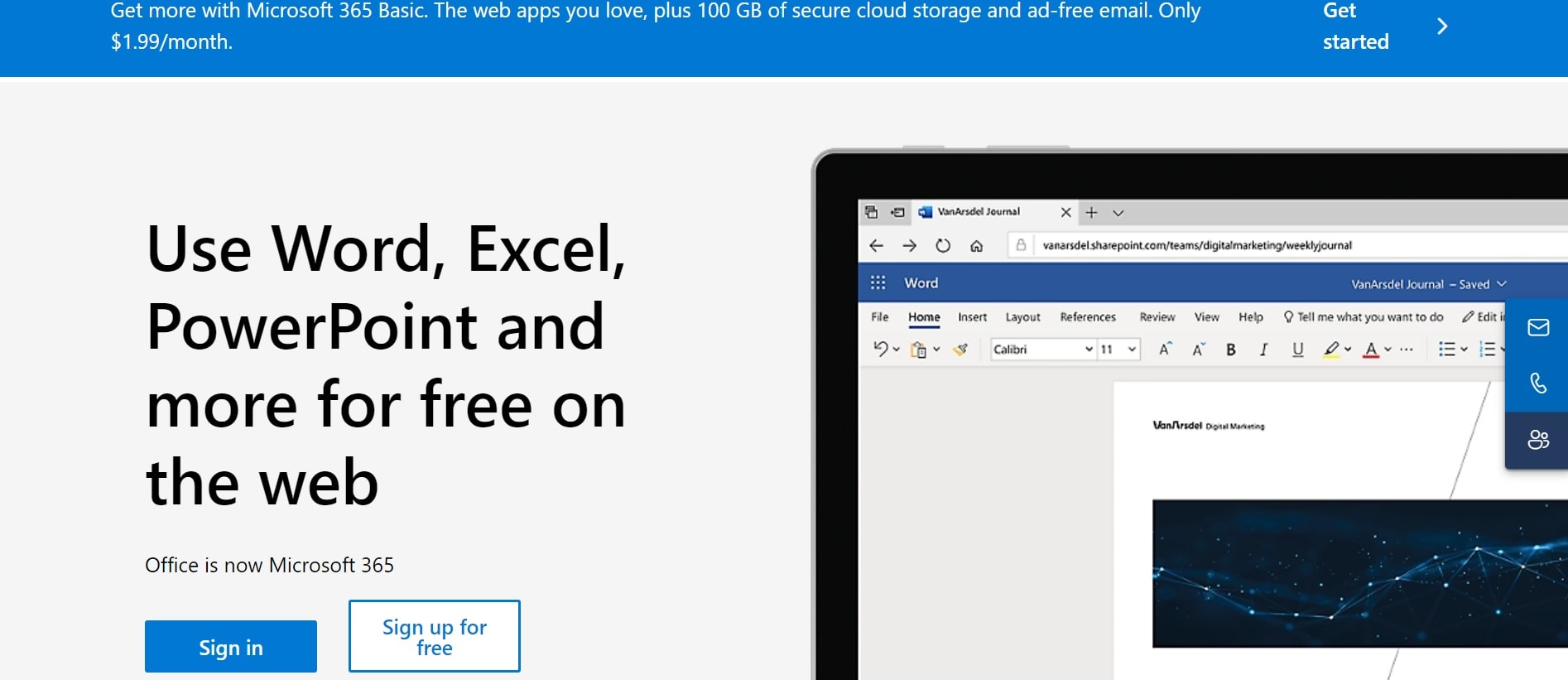
Features:
You can use Word, Excel, PowerPoint, and Outlook on the internet from anywhere.
Working together instantly and sharing files using OneDrive and Microsoft Teams.
You can use your files and apps on different gadgets like computers, iPhones, and Android phones.
Pros:
You can work from any place with internet access, making it easier to work from a distance.
Easy connection with other Microsoft services and apps.
Cons:
You need to pay every month or year for it, and that might be expensive for some people.
Requires a good internet connection to work well.
Steps to transcribe video to text by Microsoft 365
Step 1: Go to Word Online and sign in if you're not already.
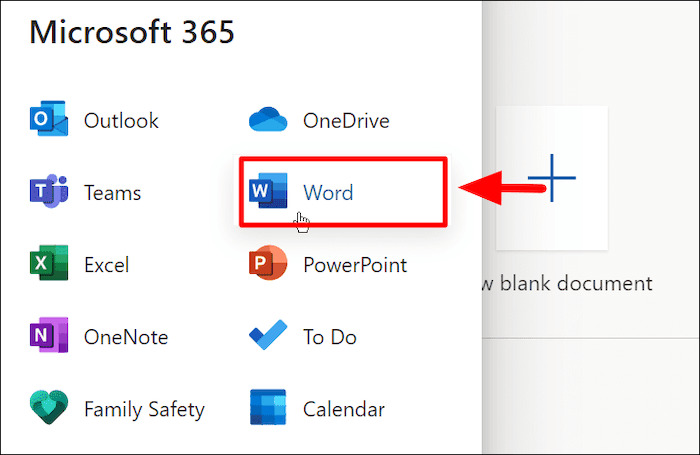
Step 2: Go to the 'Home' tab, and choose the 'Dictate' option from the list by clicking the little arrow next to it.
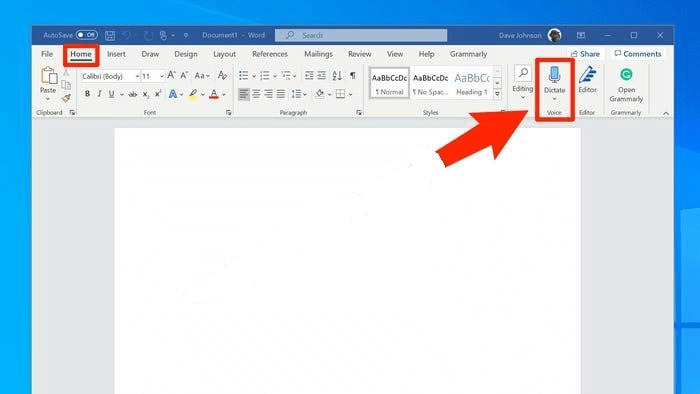
Step 3: Choose 'Transcribe' from the list to continue.
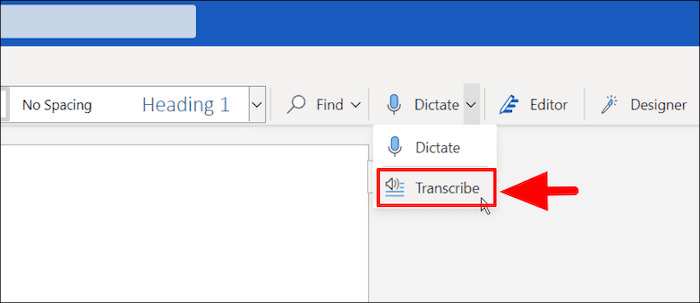
Step 4: If you haven't done transcription before, you'll have to allow Microsoft to use your microphone.
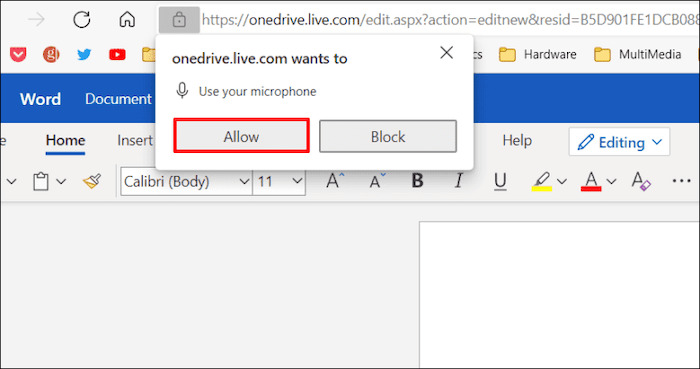
Step 5: Either put in a recording you already have or begin a new one. Pick 'Start Recording' to continue.
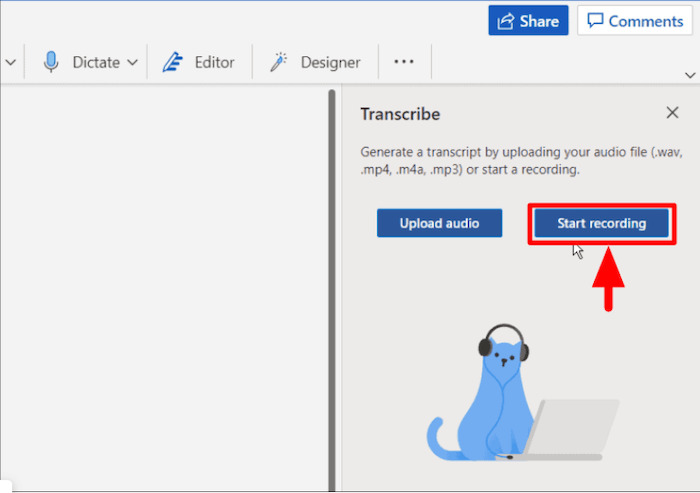
Step 6: When you click on it, the timer will begin, and you can start talking. But your words won't be turned into text while you're speaking.
Step 7: Stop the recording and use the 'Dictate' button. Keep the transcribe pane open while you're recording.
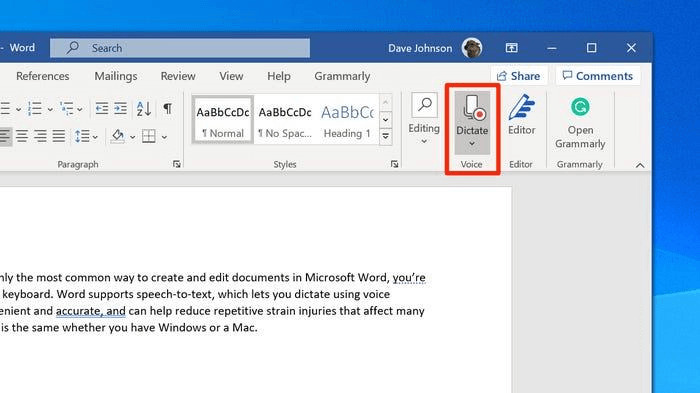
Step 8: Click the 'Save and Transcribe Now' button after you finish recording.
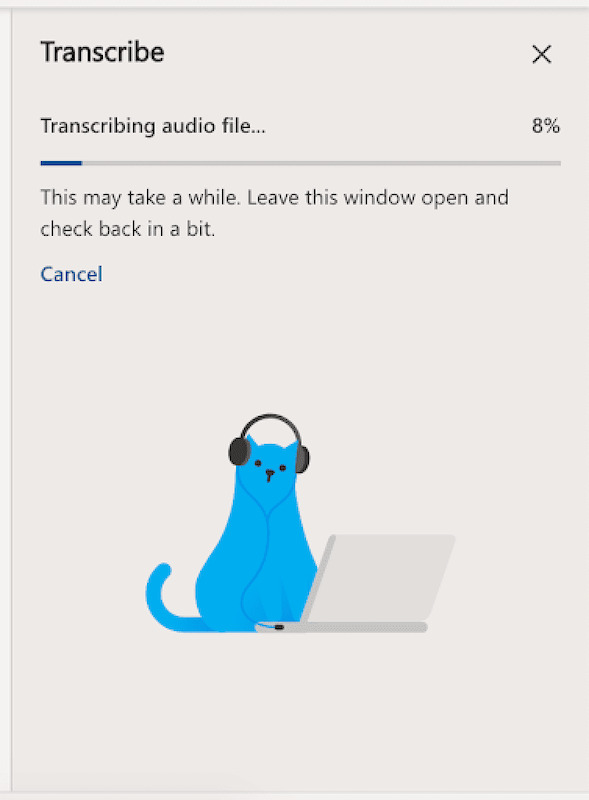
Transcribe video to text on Mac with Simon Says
Simon Says is a special computer program for Macs. With it, you can change spoken words into written words, make changes to the written words, add captions, and do other things. It looks nice and is easy to use. Just put your sound or video files into it, and it will change the words into writing or different languages using its computer smarts. You can also change the writing and ask other people to help you.
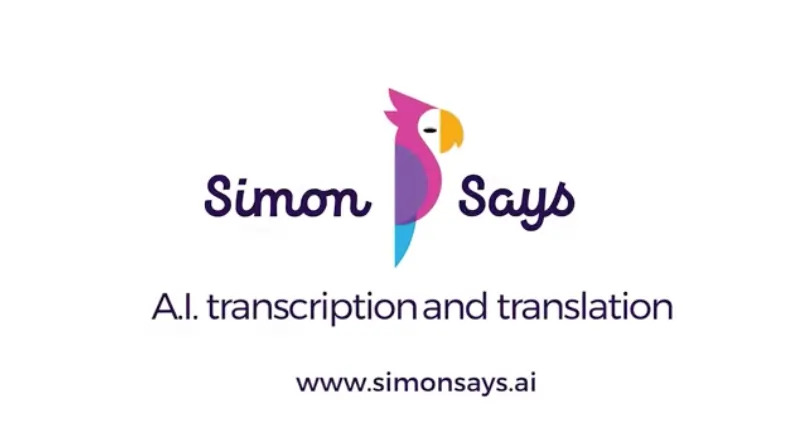
Features:
Supports 100 languages to transcribe, subtitle, or translate.
You can know who's talking in the written conversation.
Pros:
Change, make notes on, and save parts of written or spoken text.
Make your own word lists to make things more correct.
Cons:
Even if you use the free plan, you'll still need to pay $15 for every hour of transcripts.
This program can cost a lot for people who edit lots of long videos.
Steps to transcribe video to text with Simon Says
Step 1: Download and install the Simon Says program on your Mac computer.
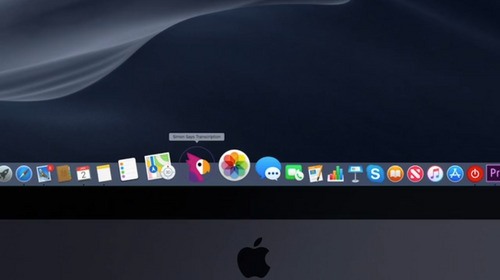
Step 2: Put your audio and video files into a new project by dragging and dropping them. You can use many different types of file formats and codes. Next, pick the language of the video, and press the 'Transcribe' button.
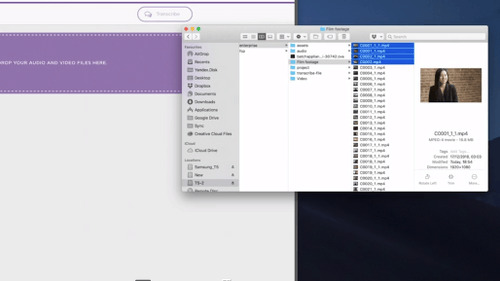
Step 3: Waiting for the transcription. How fast it goes depends on how powerful your computer is. Also, don't forget to add labels for the speakers, make notes, and make any changes you need to.
Step 4: Change the speed and starting point of the video by clicking on the clock icon. After that, select text, subtitles, or your favorite video editing program in the Export menu to make editing easier. The exported file will be saved in your computer's Downloads folder.
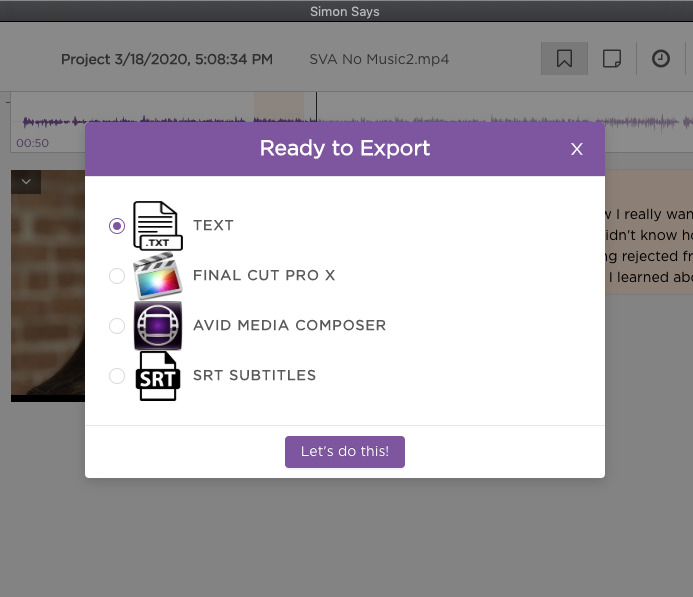
Transcribe Video to Text Free Using iPhone’s Notes App
The Notes App on the iPhone is a hidden gem for turning spoken words in videos into written text. With the new iOS 16 update, it has become even better at this. It works in languages other than English too. You can set it up to work in languages like German, French, or Japanese by adding them to your phone's keyboard settings, and then the app can transcribe videos in those languages too.
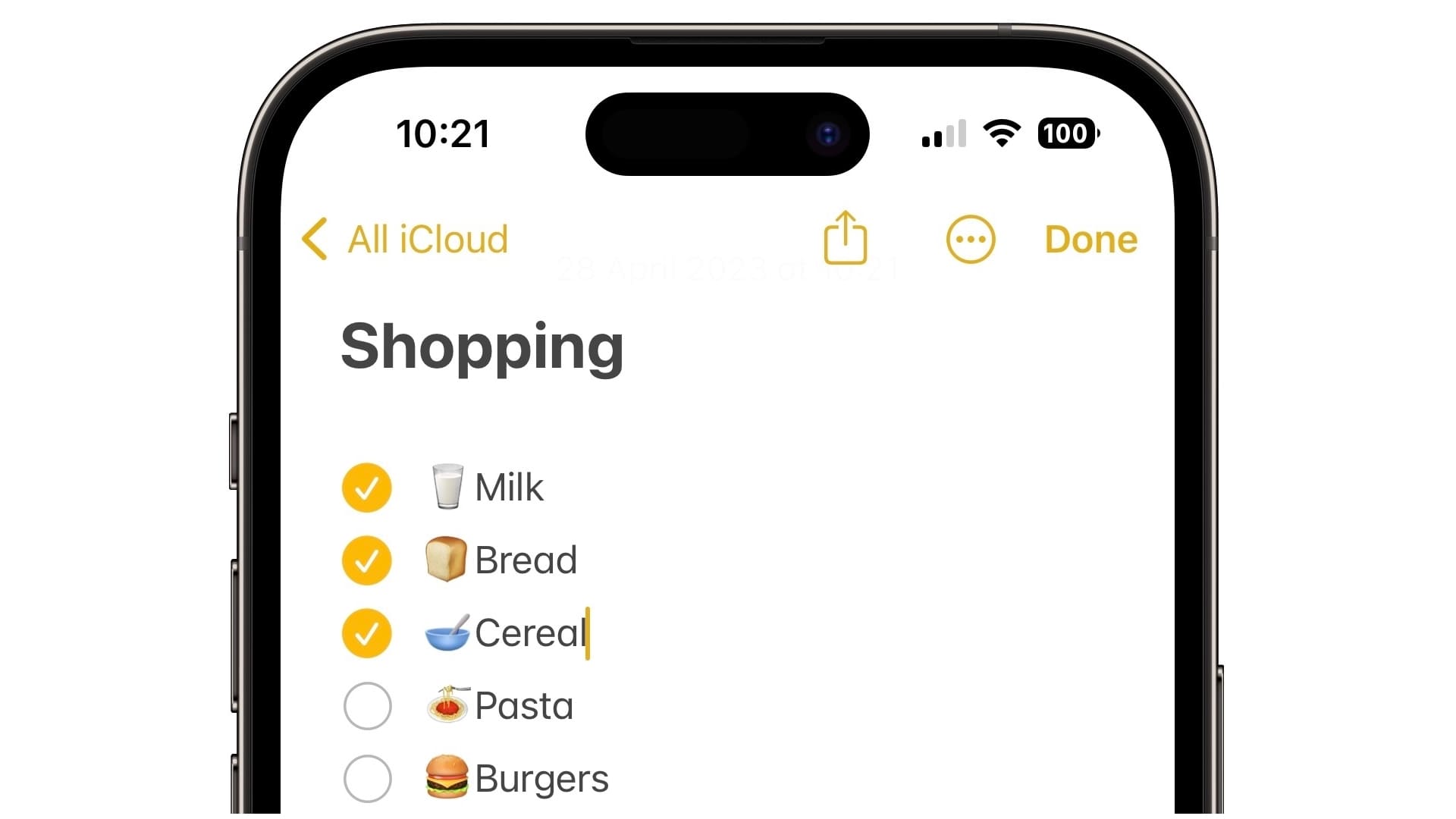
Features:
The Notes app comes already on every iPhone, so you don't have to get any more apps.
Your notes go to all your Apple gadgets (iPhone, iPad, Mac), so you can see your written-down words from anywhere.
Pros:
Notes let you do simple things like making titles, lists, and bullet points to help you arrange your transcriptions.
You can quickly look for certain notes, which makes it easy to find the things you wrote down.
Cons:
The Notes app can't do fancy things with audio like changing how fast it plays, which could be handy for writing down what's being said.
Transcribing what someone says in a video needs someone to do it by hand, and there's no machine that can change their words into text on its own.
steps to transcribe video to text free using the iPhone’s Note app
Step 1: Locate the video you want to write down on your computer, and then open the Notes App on your iPhone.
Step 2: Open the Notes App and tap the microphone icon. Choose the language you want for the transcription.
Step 3: Put your iPhone close to your computer's microphone and play the video on your computer.
Step 4: The Notes App will transcribe the video to text accurately. Make sure your iPhone is not on silent mode when transcribing the video.
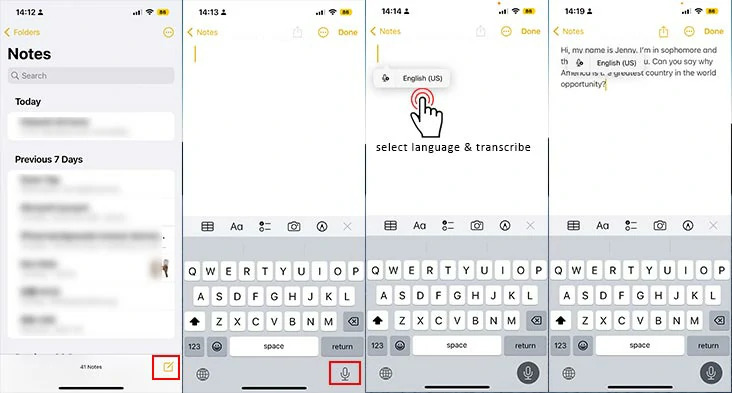
What can a video transcript be used for
Transcripts, which are written or typed versions of what people say, have many different uses in various areas.
YouTube videos
YouTube is like a big online library where people look for stuff. It's the second most popular website globally, just after Google. To get noticed on YouTube, you should use words people search for. This way, more people can discover your videos. To do well on YouTube, make sure you have accurate written records and text below your videos. Use the right words to describe your video so more people can find it.
Film and television
There are strict rules about putting captions on films and TV shows. It's not just for people who can't hear well. It also helps everyone understand complex shows like Game of Thrones. For example, a journalist named Sean Neumann said that captions helped him follow the story because there's a lot of information in the conversations. Many young people, like Gen Z, enjoy watching with captions too because it lets them do more than one thing at a time.
Journalism, podcasts, and interviews
Many times, when you turn on your camera to record something for a news story or documentary, unexpected things can happen. Noise and other disruptions can make it hard to tell a good story. But if you add text captions to your video, it can fill in the missing parts caused by these issues.
This is especially helpful when you're sharing important information that others might want to use as a reference. Transcripts can also be useful if there are any legal problems related to your reporting. Furthermore, more than 100 studies have shown that adding captions to a video makes it easier for people to understand, pay attention to, and remember the video.
Courses and academic resources
A huge 85% of Facebook videos are watched with no sound. So, if you don't have words on the screen, your posts don't matter. It may sound harsh, but it's a fact! On social media, where there's a lot of stuff, and people scroll through it super fast, having the right words on your videos is super important.
Blogs and articles
Make the most of your transcripts! You can use what's said in your podcast to make blog posts and other helpful articles for your website. Instead of typing it all over again or making entirely new stuff, use the transcripts to easily copy and paste parts from your recorded content. Rearrange these parts in different ways to make new content that will keep your audience interested and boost your SEO rankings.
Search for quotes
Having the written words of your podcast can help you quickly find quotes. With a transcript, you can easily look up information from your podcast without needing to listen to it many times. This saves time and makes it easier to remember and use quotes from you and your guest.
Key takeaways
Transcribing videos means turning what people say in videos into written words. It's useful for many things, like making videos easier to find on YouTube and helping people who can't hear well. You can do it in different ways, but using a tool like Notta is a quick and affordable option.
Notta is good at this because it uses smart technology, works in many languages, and is easy to use. Whether you make videos, write news, or teach, Notta can save you time and money while making sure your content is clear and accessible. So, if you want to transcribe videos fast and accurately, try Notta – it's a smart choice.
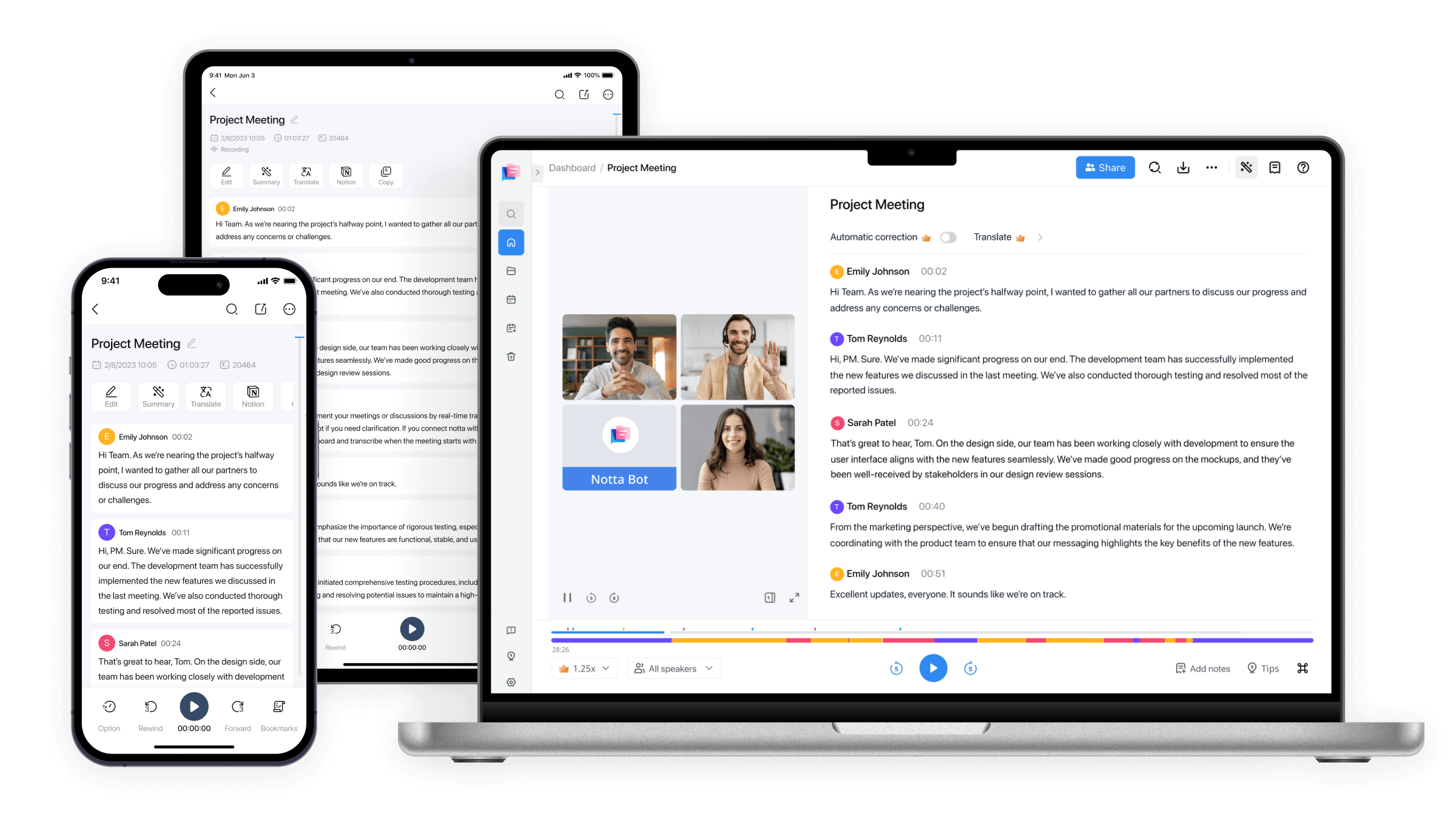
FAQs
What are the different ways to transcribe video to text?
Here are the different ways to transcribe video to text -
DIY transcription
This is the traditional way to write down what's said in videos. You have to listen to your video and write down what's being said by yourself, which can be quite slow and might take more time than making the video itself. To make this process faster, you can use a tool like Notta, which can automatically write down what's being said in the video for you.
Human transcription services
If you can afford it, you might want to think about using a human transcription service. Here's how human transcription services work: you give them your video, and they do the work of turning the spoken words into text for you. They usually use a combination of AI software and real people to make sure the transcripts are correct and quick. You'll get the transcripts in a few hours to a few days, but these services can be expensive. Sometimes, it's quicker and cheaper to use an automated tool and do a bit of checking yourself.
Automated transcription software
If you need to change a video into written words quickly because you don't have much time, using automated transcription software like Notta is the way to go. You just need to upload your video, and in a few minutes, you'll get a written version to save. Some of these tools are free, but you should pick the right one because not all of them are really good at getting everything exactly right.
What are the benefits of automated video transcription?
Why do things by hand when technology can do them for you? You can save time and money by using a program that can automatically turn video into written words. Here are the benefits of automated video-to-text transcription -
Transcription takes time
Typing out what people say in a podcast can be very time-consuming, especially if you're not an expert. Want to see for yourself? Try writing down what's said in just 15 minutes of your favorite podcast. Notice how often you need to stop and rewind to get it right.
But there's a quicker way! You can use a tool that does the typing for you. It takes just a few minutes, compared to the hours it would normally take. This frees up your time to create more podcast content instead of typing it all out yourself.
Transcription cost
If you can't turn videos into written words by yourself because you're busy, you might need to pay someone to do it for you. But be careful because this can cost a lot, especially if you make a lot of videos.
Sonix charges approximately $100 - $150 per audio hour for manual transcription by human transcribers to ensure high-quality results. Rev, on the other hand, provides automated transcription services at a rate of $0.25 per audio minute. With Verbit, transcription services range from a minimum of $15 per hour to a maximum of $50 per hour.
How long does it take to transcribe one hour of audio?
Most people need about 1 hour to type out what they hear from 15 minutes of easy-to-understand audio. So, if the audio is 1 hour long, it would take them around 4 hours to type it all. But professionals who do this job can type 1 hour of audio in 2-3 hours.
How long does a podcast or interview take to transcribe?
The time it takes to write down what people say in a podcast depends on how clear the recording is and how long the podcast episode is. If a podcast is 30 minutes, it will take two hours to write it all down. But if it's 1 hour, it will take about 4 hours to transcribe.
What equipment is required for transcription?
You don't need special tools to do transcription, but you can use some to do it faster and easier:
Noise-canceling headphones make it easier to hear your podcast clearly. If you're transcribing audio yourself, get comfortable.
Transcription software is great if you don't want to spend a lot of time transcribing. It can do in minutes what might take you hours.